| Arctic Ocean |
The World's northernmost water-body, containing the North Pole at its center, the Arctic Ocean is a bitterly cold environment.


To put that in perspective, that is only 19.3*F above Carbon dioxide's freezing point. A 20*F difference is small, very small. Think of two days in Maine. The first is 70*F, you could call that a "chilly beach day" but not a
turn off. Now the second day: 90*F you would call that a "beach day".
See where I'm going? Now the Arctic: -90*F compared to -109.3*F. What's your
new reaction? Cold yet? Well there's more.
The Arctic winters are long. Bringing weeks of darkness lightened only by the flickering Aurora Borealis or Northern Lights. Fierce storms can rage on in horrendous blizzards for weeks. These storms are called "Arctic Hurricanes" and are fast raising making them very dangerous.
The summer months are much calmer but still very cold. During the summer the sun can be above the
horizon 24/7 for weeks. The summer brings most of the arctic animals up from their winter migrations in the south.
Precipitation in the Arctic is not as most people see it. Most of the snow that is pictured when thinking of the Arctic is ice not snow.
There is actually very little precipitation in the Arctic. The Arctic Hurricanes bring snow but are fairly rare and only occur in certain parts of the inner Arctic Circle. The Arctic has a dome of high pressure creating a bubble of cold, dry air.

` The ice in the Arctic Ocean is mainly sea ice. But there is a lot of pack ice and even some glacier ice. Glacier ice is frozen fresh water, which is probably not what you would expect to see in an ocean. 70% of the ocean is covered by ice year round. That is a lot of ice. Think 70% of 5,440,00 square miles. Towards the coasts there are ice floes and sheets of pack ice.
Probably the reason we don't picture tides in the arctic is because there almost aren't any. A 1-foot tide is unusually large for the typical Arctic water cycle. 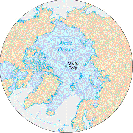

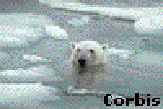
The currents are quite complex. 60% of incoming water runs North from the Atlantic Ocean through the Norwegian Sea past Iceland and Norway to the Arctic. 60% percent of the departing water leaves through the "East Greenland Current" running between Greenland and Iceland. Some water is also exchanged through the Bering Strait. These currents form holes in the ice called "Leads". They are cracks in the ice that can last seconds or days depending on conditions. Obviously "Arctic Hurricanes" will change how the ice behaves. Much like "Leads" are the "Polynyas" created in much the same way, they are holes or cracks in the ice. However Polynyas are much larger and are much more permanent. It is not unusual for Polynyas to last a year. Both types of holes: Leads and Polynyas are important because they provide breathing holes for Marine Mammals such as seals, belugas, and polar bears.
The "Arctic Circle" is an imaginary line such as the Equator. The circle wraps around the earth defining a chunk of the northern globe. The line is at 66*33'N all the way around the earth, catching the tip of Canada, Alaska, Russia, Finland, Sweden, Norway, the smallest tip of Iceland and close to 80% of Greenland. The Arctic Ocean is just north of the circle. However the actual placing of the ocean is debatable. Some scientists' claim that it is part of the Atlantic Ocean and others say it contains the Barents, East Siberian and Buefont seas. It is interesting to see every author's opinion on the matter. Some even try to avoid the issue or make short mention of it. Like it is something not to be driven on.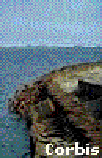
There is very little "soil" found in the Arctic Ocean but fossil fuels are found along its coasts. Oil drilling is a big industry in the far north, especially in Alaska. Most of the oil that is "harvested" is exported to Japan.
The extreme cold and lack of light for photosynthesis makes plant growth in the Arctic Ocean nearly impossible. If there are plants growing in the Arctic Ocean they are very rarely mentioned, for, in all my research I found none. However the lack of plants does not rule out the animals. Many animals have adapted to the cold and live very happily in the ocean on fish and zoo- plankton. Many of them are Marine Mammals. Cold Blooded animals need a source of heat such as the sun. The arctic is low on sun especially in winter so reptiles would probably not survive very long in the arctic. Mammals on the other hand have their own body heat and have adapted to insulate themselves from the cold.

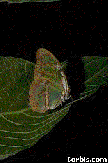


Polar bears are probably the best examples of adaptations. Usually bears eat a variety of foods being much more omnivores vs. carnivores as the general public likes to think of them. But because of the lack of herbs in the Arctic polar bears are pure carnivores. They have extraordinary sense of smell and can detect prey up to 20 miles away. Their paws are powerful and can deliver fast strong blows that can kill prey quickly. They have powerful jaws for pulling their prey out of the water. Polar bears have sand paper like foot treads to hold on to the ice and they have fur that shakes away snow and ice easily. They are protected by a layer of blubber and often risk overheating. Resting often the bears move slowly to avoid over heating. Imagine over heating in the Arctic.
Fish live in the Arctic too, but none are there year round. Most live in the seas on the edge of the ocean and the coast of Asia, Europe, North America and Greenland where food supplies are good. The Arctic Char is a fish similar to the trout that lives in the Arctic Ocean but moves inland to give birth.
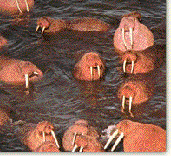
Birds do visit the Arctic seasonally. Many summer visitors include geese, ducks, and swans. Snow Geese migrate to the Arctic from Mexico and the US. The Arctic is home to lots of birds that come to feed their young. Diving sea birds such as Gillemonts and Puffins eat fish and shellfish while many ducks feed on water plants near the coasts, and land birds feed on insects. Predators such as Gyrfalcons and Snowy Owls eat rodents who thrive on the tundra. Ocean birds arrive as soon as there is open water between ice. Shorebirds come in as soon as the marshlands thaw.

Few birds stay in the Arctic year round. And those who do are specially adapted: most have thick feathers and a layer of fat for insulation. Some may even have feathered feet to protect themselves for the cold ice. The Ivory Gull is one of these residents. Named for its pure white color they are scavengers. Following polar bears and eating the left over meat is their prime food source.
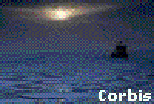

Pollution is spreading into the north with the expansion of tourism and research. Air pollution circles north from densely populated areas in the south and currents bring polluted waters from all over the world. The increasing population in arctic towns creates waste management issues that are usually ignored or forgotten. Water pollution effects the animals directly as it moves up through them in a filter like effect. It starts with the plankton that absorbs the pollution. The whales, fish and shellfish eat the plankton, and the birds, seals, whales and polar bears eat the fish and shellfish. So the effect filters through to and threatens the whole ecology of the biome.
Warming in the arctic is not yet fully explored or understood. Records have shown a substantial change in temperatures over the last 50 years. Temperatures in Alaska have risen 6*F while in Northeast Canada temperatures have cooled. Studies have shown that the temperature change is due to the increase of greenhouse gasses in our atmosphere. So every buss and car in the world effects the temperatures in the Arctic. Even though global warming takes the brunt of the blame there was a time of cooling in Alaska that was probably not caused by global warming. More research is being done and no one knows for sure yet.


It is hard to say if the effects on the Arctic are reversible or not. I would call it a teeter-totter situation. For example: the pollution of air and water due to oil drilling has already effected the environment. However with methods of conservation and clean up the damage might be undone and stop the effect by not adding more. Oil drilling is a good example because while it maybe possible to stop pollution it is nearly impossible to stop oil drilling and it's long term effect (global warming). Because other fossil fuels are becoming limited, oil drilling is expanding to open more fields. To stop this expansion an alternative energy source must be designed.
Climate change is also hard to judge, and I believe it depends on the oil industry. If an alternative fuel can be found and a clean up process is put into effect global warming may be reversed. 
Predicting the ocean's future is hard and apt to change. So far the effects of pollution and climate change have been so shaky it is hard to look at them for a prediction. However I believe that the Arctic will continue 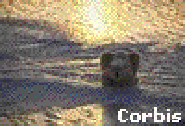

to be effected and conservation acts will go unnoticed. My own prediction scares me. I may be wrong, frankly I hope I am, but itmay be the truth!
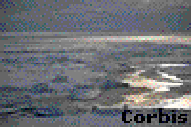
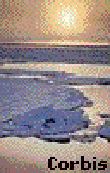
| One World | HOME |
| Sea Otters | Humpback Stranding | Bird Quiz | Right Whales | Shade Grown Coffee | Arctic | Basilosaurus | Antarctic Zebra(fiction) |